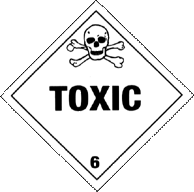Cyanamide
- Carbodiimide
- Hydrogen cyanamide
- Amidocyanogen

Cyanamide | |
| |
| Formula | H2NCN |
| Structure |  |
| Description | Orthorhombic, elongated, six-sided tablets from dimethyl phthalate |
| Uses | Dimer (dicyandiamide) is the raw material for melamine and guanidine. |
| Registry Numbers and Inventories. | |
| CAS | 420-04-2 |
| EC (EINECS/ELINCS) | 206-992-3 |
| EC Index Number | 615-013-00-2 |
| EC Class | Toxic; Harmful; Irritant; Sensitising |
| EC Risk Phrase | R 21 25 36/38 43 |
| EC Safety Phrase | S 3 22 36/37 45 |
| RTECS | GS5950000 |
| RTECS class | Agricultural Chemical and Pesticide; Drug; Reproductive Effector |
| UN (DOT) | 3276 |
| Merck | 13,2713 |
| Beilstein/Gmelin | 1732569 |
| Beilstein Reference | 4-03-00-00145 |
| EPA OPP | 14002 |
| Swiss Giftliste 1 | G-5195 |
| Canada DSL/NDSL | DSL |
| US TSCA | Listed |
| Austrailia AICS | Listed |
| New Zealand | Listed |
| Japan ENCS (MITI) | Listed |
| Korea ECL | Listed |
| Properties. | |
| Formula | CH2N2 |
| Formula mass | 42.04 |
| Boiling point, °C | 259 |
| Vapor pressure, mmHg | 0.014 (25 C) |
| Vapor density (air=1) | 1.45 |
| Density | 1.285 g/cm3 (20 C) |
| Solubility in water | 775 g/L |
| Refractive index | 1.4418 (48 C) |
| pKa/pKb | 12.90 (pKb) |
| Heat of fusion | 7.3 kJ/mol |
| Heat of vaporization | 49.6 kJ/mol |
| Heat of combustion | -718 kJ/mol |
| Hazards and Protection. | |
| Storage | Store in a cool, dry, well-ventilated area away from incompatible substances. Refrigerator (approx 4 C). Keep containers tightly closed. |
| Handling | Wash thoroughly after handling. Use with adequate ventilation. Avoid contact with eyes, skin, and clothing. Keep container tightly closed. Avoid ingestion and inhalation. |
| Protection | Eyes: Wear appropriate protective eyeglasses or chemical safety goggles as described by OSHA's eye and face protection regulations in 29 CFR 1910.133 or European Standard EN166. Skin: Wear appropriate protective gloves to prevent skin exposure. Clothing: Wear appropriate protective clothing to prevent skin exposure. |
| Respirators | Follow the OSHA respirator regulations found in 29CFR 1910.134 or European Standard EN 149. Always use a NIOSH or European Standard EN 149 approved respirator when necessary. |
| Small spills/leaks | Absorb spill with inert material, (e.g., dry sand or earth), then place into a chemical waste container. Avoid runoff into storm sewers and ditches which lead to waterways. Provide ventilation. |
| Stability | Stable under normal temperatures and pressures. Thermally unstable. |
| Incompatibilities | Strong oxidizing agents - strong reducing agents - acids - bases. |
| Decomposition | Hydrogen cyanide, nitrogen oxides, carbon monoxide, carbon dioxide, nitrogen. |
| Fire. | ||||
| Flash Point,°C | 1.2 | |||
| Fire fighting | Wear a self-contained breathing apparatus in pressure-demand, MSHA/NIOSH (approved or equivalent), and full protective gear. During a fire, irritating and highly toxic gases may be generated by thermal decomposition or combustion. Combustible solid. May be ignited by heat, sparks, and flame. Extinguishing media: Do NOT get water inside containers. In case of fire use dry chemical, dry sand, or carbon dioxide. | |||
| Fire potential | Slightly flammable. Combustion requires preheating. Moderate hazard. | |||
| Combustion products | Fire may produce irritating, corrosive and/or toxic gases. | |||
| NFPA | Health | 4 | ||
| Flammability | 1 | |||
| Reactivity | 0 | |||
| Health. | |
| Exposure limit(s) | TLV: ppm; 2 mg/m3 (ACGIH 1993-1994). NIOSH REL: TWA 2 mg/m3 |
| Poison_Class | 3 |
| Exposure effects | Rapid heart rate may occur. Abnormally low blood pressure and low heart rate are rare. Headache, dizziness, fatigue, vertigo, and coma may be part of the disulfiram-like reaction. |
| Ingestion | Harmful if swallowed. Causes digestive tract irritation. |
| Inhalation | Dust is irritating to the respiratory tract. |
| Skin | Causes severe skin irritation. Harmful if absorbed through the skin. |
| Eyes | Dust may cause mechanical irritation. Causes severe eye irritation. |
First aid |
|
| Ingestion | If victim is conscious and alert, give 2-4 cupfuls of milk or water. Never give anything by mouth to an unconscious person. Get medical aid immediately. |
| Inhalation | Remove from exposure to fresh air immediately. If not breathing, give artificial respiration. If breathing is difficult, give oxygen. Get medical aid. |
| Skin | Get medical aid. Flush skin with plenty of soap and water for at least 15 minutes while removing contaminated clothing and shoes. Wash clothing before reuse. |
| Eyes | Flush eyes with plenty of water for at least 15 minutes, occasionally lifting the upper and lower eyelids. Get medical aid immediately. |
| Transport. | ||
| UN number | 3276 |  |
| Response guide | 151 | |
| Hazard class | 6.1 | |
| PRTC | T | |
| Packing Group | I; II; III | |